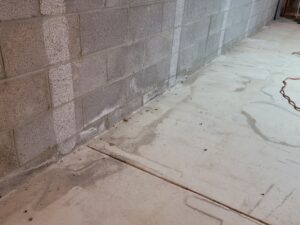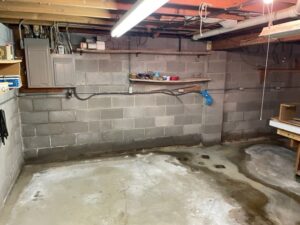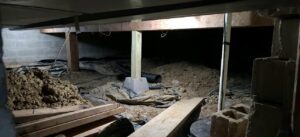The first line of defense against water entering the basement of your home is prevention. The beginning of water damage in the basement can begin with a trickle and become an expensive basement waterproofing problem for the homeowner pretty quickly. Unfortunately, water damage can go undetected for many years in many homes across the country. And in many instances, homeowners are unaware of the damage happening below their first floor.
Fortunately, you can prepare your home and your finances by being proactive and ensuring water damage doesn’t ruin your home and your finances.
How can you protect your home?
There are several proactive measures you can do yearly to protect your home from water invasion. There are some measures you have to do yearly, while others can last you for many years. First and foremost:
- After the Fall Season, Clean the Gutters of your Home
Cleaning the gutters from leaves, sticks, and dirt accumulation is one of the chores that will help protect your home from water damage. After the trees have finished shedding their leaves, it is time for the ladder to come out and make sure the gutters are clean. Also, check that all the spouting is firmly in place to allow the water flow to continue where the drainage is best for your home.
2. Protect the basement with window wells protective covers
Not many people cover the windows wells with protective covers, but those covers can help keep the rainwater and melted snow from pooling around the foundation of the home. You can buy a two-pack if that’s all you need online or from any home improvement store you frequent. These protective covers will ensure the water is not going directly to the walls of the foundation, and instead, spread it farther away.
3. Leveled Driveways and walkways around the Foundation
Tilted driveways or abutting walkways can carry the rain’s excesses right into the basement of your home. Keep in mind tree roots can be the culprit when we talk about unleveled driveways. Either way, make sure melted snow or rainwater is not pooling around the foundation and seeping into the basement and walls of your home.
4. Make sure the water Drainage is at least 10ft. from the foundation
During the construction of your home, the drainage system put in place might be too old, or not working properly right now. Especially if you have an older home. Make sure the pipes carrying the water from the home are clear and working properly. There are many instances where the plastic pipe put there many years ago is clogged, or has too many holes. If that’s the case, water is not properly draining away from the perimeter of the home. You can replace the plastic pipe with a PVC pipe to keep water away from the foundation and keep your basement dry.
5. Is the Sump Pump working properly?
Every homeowner should check the sump pump’s condition in their home at least once a year. It is easy to ignore it or to believe it is working well. It is better to be prepared with a working sump pump before the torrential spring showers come. If the sump pump needs to be replaced, do you know it?
Water damage in the basement is a common occurrence in many older homes. Many homeowners do not notice the water damage till it is very obvious, and by then the work needed can be expensive. In some other cases, new construction homes can have water damage in their basement if the construction was not done properly. Either way, water damage in many homes in the Northeast Ohio area is a common occurrence.
Thankfully, Pioneer Basement Solutions offers free, no-obligation quotes to All homeowners. We talk to you about your options without the pressure and without giving you bogus patented solutions so we can charge you more. Contact Us today to offer you the best service and best solutions for your home in the Northeast Ohio area.






